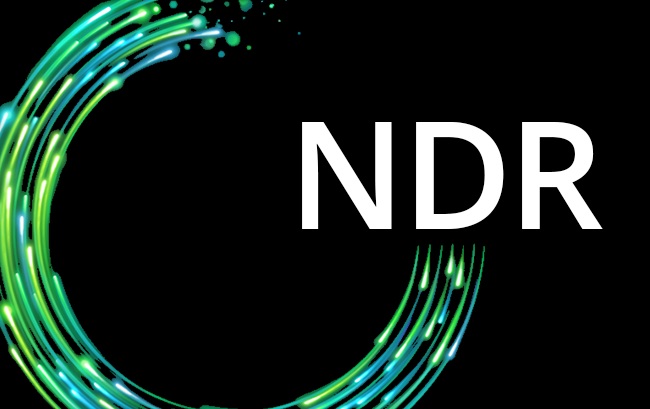The healthcare industry has become one of the most attractive targets for cybercriminals. Hospitals, insurance companies, and medical research institutions hold vast amounts of sensitive patient data, making them a prime focus for ransomware, insider threats, and nation-state attacks. In response, the Health Insurance Portability and Accountability Act (HIPAA) mandates strict safeguards to protect the privacy and security of electronic protected health information (ePHI).
While HIPAA compliance covers many domains—such as administrative safeguards, physical access controls, and employee training—one of the most critical aspects is network monitoring. Healthcare organizations must maintain visibility into their networks to detect unauthorized access, prevent data breaches, and demonstrate compliance during audits. This is where Network Detection and Response (NDR) solutions come into play.
In this article, we’ll explore how NDR helps healthcare organizations achieve HIPAA network monitoring compliance by providing continuous visibility, advanced threat detection, and rapid response capabilities.
The HIPAA Security Rule and Network Monitoring
The HIPAA Security Rule requires healthcare entities and their business associates to implement technical safeguards to ensure the confidentiality, integrity, and availability of ePHI. Within this framework, several provisions directly relate to network monitoring:
- Audit Controls (§164.312(b)): Systems must record and examine activity in information systems containing or using ePHI.
- Access Control (§164.312(a)): Organizations must implement technical policies that restrict access to ePHI to authorized individuals.
- Integrity (§164.312(c)): Safeguards must be in place to protect ePHI from improper alteration or destruction.
- Transmission Security (§164.312(e)): Measures must be taken to protect ePHI during transmission across electronic communications networks.
To meet these requirements, healthcare organizations need real-time monitoring, logging, and analysis of all network activity. Traditional security tools like firewalls and intrusion detection systems (IDS) often fall short in providing the depth of visibility and response required.
Why NDR is Critical for HIPAA Compliance
Network Detection and Response (NDR) platforms provide continuous monitoring of network traffic to detect anomalies, threats, and compliance violations. Unlike traditional IDS/IPS, NDR leverages advanced techniques such as machine learning, behavioral analytics, and threat intelligence to identify both known and unknown attacks.
Here’s how NDR aligns with HIPAA requirements:
- Comprehensive Visibility into ePHI Traffic
- NDR inspects east-west (internal) and north-south (external) traffic.
- Identifies where ePHI resides, how it moves across the network, and who is accessing it.
- Provides network-level audit trails to support HIPAA’s audit control requirements.
- Advanced Threat Detection
- Detects lateral movement, unauthorized access attempts, and data exfiltration in real time.
- Identifies insider threats, compromised medical devices, and shadow IT systems.
- Uses AI and anomaly detection to find unusual patterns that may indicate policy violations.
- Incident Response and Forensics
- Delivers full packet capture and forensic capabilities to investigate suspicious activity.
- Supports HIPAA’s requirement to review and examine security events affecting ePHI.
- Helps organizations demonstrate due diligence during compliance audits.
- Encryption and Transmission Security Validation
- Monitors for unencrypted ePHI transfers across the network.
- Detects misconfigured or non-compliant communication protocols.
- Ensures secure TLS/SSL sessions are enforced.
Use Cases: How NDR Supports HIPAA Compliance
1. Monitoring Connected Medical Devices
Many Internet of Medical Things (IoMT) devices lack robust security controls. NDR provides deep visibility into device behavior, ensuring they don’t become entry points for attackers targeting ePHI.
2. Detecting Unauthorized Access
If an employee accesses a patient record outside of their role or tries to export bulk patient data, NDR generates alerts and provides forensic context for compliance reporting.
3. Preventing Ransomware Attacks
NDR detects early indicators of ransomware, such as command-and-control (C2) traffic or anomalous encryption patterns, helping organizations respond before patient data is locked or stolen.
4. Ensuring Secure Data Transmission
NDR continuously monitors whether sensitive patient data leaving the network is encrypted, helping healthcare organizations meet HIPAA’s transmission security mandate.
Best Practices for Deploying NDR for HIPAA Compliance
To maximize the value of NDR in achieving HIPAA network monitoring compliance, healthcare organizations should follow these best practices:
- Map ePHI Data Flows
Identify where ePHI resides and how it travels across the network. This ensures NDR monitoring is focused on critical assets and communication channels. - Integrate with SIEM and SOAR Platforms
NDR data should feed into broader security ecosystems to enhance automated incident detection and response workflows. - Leverage Decryption Capabilities
Many NDR platforms support SSL/TLS decryption, enabling monitoring of encrypted traffic without compromising compliance. - Implement Continuous Compliance Reporting
Use NDR-generated logs and reports to demonstrate ongoing HIPAA compliance during internal and external audits. - Train Security Teams on NDR Tools
HIPAA compliance is not just about technology—it requires well-trained staff capable of interpreting alerts and taking swift action.
Benefits Beyond Compliance
While the primary goal may be achieving HIPAA compliance, deploying NDR offers broader security benefits:
- Reduced Breach Risk: Continuous monitoring prevents unauthorized access to patient data.
- Operational Efficiency: Automated detection and response reduce alert fatigue for security teams.
- Improved Patient Trust: Patients are more likely to trust providers that demonstrate strong cybersecurity practices.
- Regulatory Readiness: Beyond HIPAA, NDR supports compliance with HITECH, GDPR, and other data protection laws.
Conclusion
HIPAA compliance is non-negotiable for healthcare organizations handling sensitive patient data. However, meeting its network monitoring requirements can be challenging with traditional tools alone. Network Detection and Response (NDR) solutions bridge this gap by offering deep visibility, advanced threat detection, and forensic capabilities that align directly with HIPAA’s security rule.
By implementing NDR, healthcare providers not only strengthen their compliance posture but also enhance overall cybersecurity resilience—protecting patients, preserving trust, and ensuring the uninterrupted delivery of critical healthcare services.






